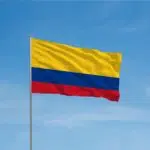National Pennsylvania Day, celebrated on July 20 every year, honors the second state to join the Union. It is a day to commemorate the significance of Pennsylvania in American history, as well as its distinctive landmarks and culture that still exist today. Pennsylvania is also known as the Keystone State since it was once the temporary capital of the United States in Philadelphia. While the origin of the term has been lost, the meaning has not. Bridge builders understand that leaving the important keystone out of their construction would be a mistake that would result in collapse.
History of NATIONAL PENNSYLVANIA DAY
Pennsylvania became the second state to enter the union on December 12, 1787, when it was granted statehood. Pennsylvania —sometimes known as the Keystone State — was centrally located among the original 13 colonies. As the former capital of the United States, Philadelphia witnessed numerous key historical events, including the drafting of the “Declaration of Independence” and the “United States Constitution.”
We are all aware of the following significant historical events in Pennsylvania — Philadelphia hosted the first and second “Continental Congresses,” as well as helped to launch the country into the “Revolutionary War.” Pennsylvania was the second state to ratify the United States Constitution, and one of the bloodiest battles of the Civil War was fought in Pennsylvania and the Battle of Gettysburg.
Pennsylvania performed several roles that may be deemed pivotal. To begin with, the independence vote was divided among eight delegates. As a result, the division was critical in determining whether to proceed toward independence and consolidating the newly created country’s unity.
Pennsylvania contributed forces to assist the cause during military actions. Valley Forge, in reality, portrays the tale of a young, maturing army and citizenry’s leadership and sacrifice. As we all know, the Declaration of Independence and the United States Constitution were both signed in Philadelphia during its transitory status as the nation’s capital. It was physically located in the heart of the 13 original colonies. Pennsylvania has several historical sites as well as great outdoor experiences. Take a moment on Pennsylvania Day to reflect on what a wonderful state we live in.
NATIONAL PENNSYLVANIA DAY timeline
William Penn names the city Philadelphia, he utilizes the Greek terms for love (‘phileo’) and brother to describe himself (‘adelphos'), and that's how Philadelphia earns the moniker ‘City of Brotherly Love.’
Pennsylvania becomes a state on December 12.
From 1790 until 1800, Philadelphia serves as the nation's capital.
The inaugural official “Major League Baseball World Series” is held at Exposition Park in Pittsburgh, between the “Boston Americans” and the “Pittsburgh Pirates.”
NATIONAL PENNSYLVANIA DAY FAQs
What do you call a person from Pennsylvania?
Pennsylvanians and Pennamites are people who dwell in Pennsylvania.
What is Pennsylvania well-known for?
Before World War II, Pennsylvania was one of the nation’s major industrial centers for coal, steel, and railways. The state is also well-known for its leading mushroom output, which totals 425 million pounds per year and is worth more than $330 million.
What made Pennsylvania special?
Pennsylvania’s early history, influenced by its founder William Penn’s idealism, distinguishes it among the original thirteen colonies. In Pennsylvania, religious tolerance, diversity, and representative governance became a reality.
How to Observe NATIONAL PENNSYLVANIA DAY
Visit a historic site
Visit historic sites such as “Gettysburg” or “Valley Forge,” because it is only by visiting these historical sites that we can learn about our ancestors. History gives us the impression that we are a part of something much larger.
Get that Philadelphia cheesesteak
There is just one place to go for the tastiest and most authentic Philly Cheesesteak. Of course, Philadelphia! On a long, crusty Italian bread, with thinly sliced beef rib eye, sautéed onions, peppers and mushrooms, and melted cheese.
Share it on social media
Explore the famous, historic, and hidden gems of this intriguing and diverse state as you celebrate National Pennsylvania Day. Share your #NationalPennsylvainaDay experiences on social media with the hashtag #NationalPennsylvainaDay.
5 Interesting Facts About Pennsylvania
Smiley face emoticon
On September 19, 1982, “Carnegie Mellon University” Professor Scott Fahlman, devised the smiling face emoticon in Pittsburgh.
There’s only one town
In Pennsylvania, there is only one town, Bloomsburg — the rest of the country is divided into cities, boroughs, or townships.
America’s mushroom
Half of all mushrooms farmed in the United States are grown in and around Kennett Square, Pennsylvania.
First European settlers
Sweden was the first of the European settlers in Pennsylvania.
First wire cable suspension bridge
In 1816, the world's first wire cable suspension bridge was completed across the “Schuylkill River Falls” in Philadelphia.
Why NATIONAL PENNSYLVANIA DAY is Important
It celebrates Pennsylvania’s history and culture
Pennsylvania is rich in culture and history. Its stunning transformation from a territory to statehood has resulted in a vibrant economy and life. National Pennsylvania Day serves as a reminder of everything that our state has to offer.
It’s a famous tourist spot
Pennsylvania has been endowed with gorgeous mountains, canyons, national parks, and forest areas as a result of its geographical location. National Pennsylvania Day invites us to appreciate its natural beauty.
Known for the coal production
Pennsylvania has the world's biggest known deposit of hard coal, sometimes known as anthracite coal. The state is also rich in bituminous coal, which is mostly mined in the state's southwest portion.
NATIONAL PENNSYLVANIA DAY dates
| Year | Date | Day |
|---|---|---|
| 2025 | July 20 | Sunday |
| 2026 | July 20 | Monday |
| 2027 | July 20 | Tuesday |
| 2028 | July 20 | Thursday |
| 2029 | July 20 | Friday |
















